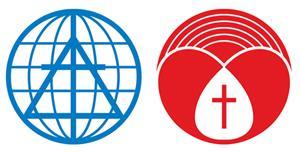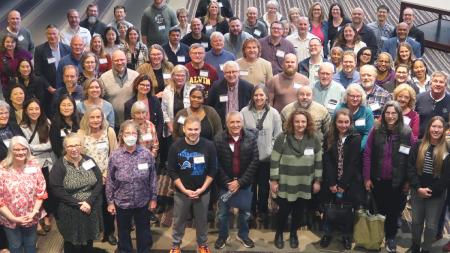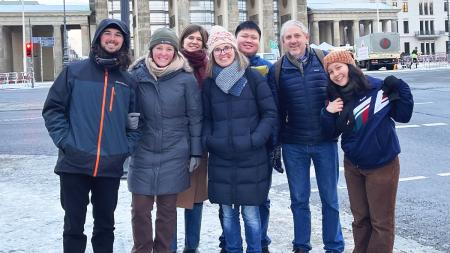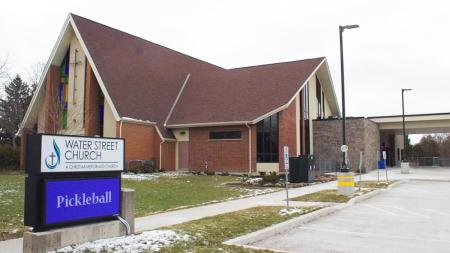Mission Unification Process Continues

Various teams continue to work hard to address a range of items as the process of unification continues between Christian Reformed Home Missions and Christian Reformed World Missions.
Under the leadership of what is called the Interim Executive Leadership Team, an Organizational Design Team has been working alongside five other sub-teams, each charged with a specific mandate, to come up with a draft report looking at a tentative organizational framework for the New Mission Agency.
The goal is to have a final draft of the organizational framework completed with some of the details as to the structure completed by the meetings of the Home Missions and World Missions boards in April.
Leaders of the agencies say that, for the sake of doing this right, the process has been deliberately participative and this has meant spending more time at the initial phases.
“By following an intentionally participatory and staged process, we are convinced that our emerging mission agency will be much more prepared to make the kind of timely choices that will move towards the kind of effectiveness and efficiency that was imagined when this joining process began,” says a draft document put together by the Organizational Design Team.
That document was recently shared with personnel of the two agencies and others.
“We are working closely with the other sub-teams to work together on developing a solid and lasting framework for a common future,” says the document.
Synod 2015 last June gave the agencies approval to move forward to create a new mission agency to respond to global and local challenges in ministry.
“As we share with you a report of the organizational framework work to date, we would do well to remind ourselves of some of the ongoing shifts that contribute to making this a Kairos moment (a time in which God is ready to do special work) for the formation of a new mission agency,” the draft document says.
These ongoing shifts include the changing face of global Christianity, in which the majority Christian world is moving from North America and Europe to Africa, Latin America and Asia.
In addition, there is the changing mission context for the North America, where the number of church goers is falling and the number of people from nations around the world are moving into neighborhoods in the U.S. and Canada.
“Categories such as Home and World missions no longer make as much sense as they once did,” says the draft document. “Indeed those categories may well block us from participating in some of what God’s Spirit is already doing in our increasingly connected world.”
As a result, says the draft document, it is important to consider the roles and functions that a denominational mission agency could play in responding to the shifting nature of global and local mission work. And these include:
- Catalyzing a shared Reformed vision of mission rooted in the CRC’s Kingdom theology.
- Developing a rich context for mutual learning and innovation which builds on both the experiences of local congregations and ministry partners, and the previous decades of work of the agencies.
- Networking congregations, classes, and other ministry partners around specific mission projects.
- Accompanying congregations and classes through the assistance of embedding long-term incarnational mission leaders both in North America and globally.
As part of this process, says the draft document, they are using the metaphor of a sandbox with four sides to help frame issues they are addressing.
The metaphor comes from the book, Leading from the Sandbox, by T.J. Addington, the director of ReachGlobal, the mission organization of the Evangelical Free Church of America.
One side of this sandbox, according to the book, is the vision or the preferred future to which a new agency aspires; a second side is the mission or the reason for which the agency will exist; a third side consists of the core postures or things to be done daily to complete the mission, and the final side consists of the distinct missions values of the new agency.
“Central to this book,” says the draft document, “is a question: How do you develop, empower and release high-impact teams of missionally aligned and healthy individuals working strategically together under good leadership towards common objectives, with accountability for results?”
Meanwhile, in partnership with the Calvin Center for Social Research, the design team sent out surveys to internal and external stakeholders.
The survey asked people to respond to a presentation that has been used to describe reasons for, and the process involved in, coming up with a design for a new missions agency.
More than 50 percent of those who responded to the survey said they were positive, while nearly 30 percent were very positive, about the presentation.
“A great deal of collective wisdom was gleaned from these surveys and from a number of additional discernment groups that were convened to give further input into our organizational framework,” says the draft document.
After the joint Home Missions and World Missions February meetings, the Organizational Design Team will start a second round of surveys with the plan of having a more concrete organizational frame to present in April, which then, through the Board of Trustees, will go on to Synod 2016.


